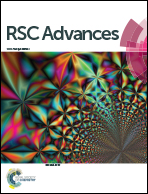Interaction of copper and 2,4,5-trichlorophenol on bioremediation potential and biochemical properties in co-contaminated soil incubated with Clitocybe maxima
Abstract
The bioremediation of soil co-contaminated with heavy metal and organic pollutants has attracted considerable attention in recent years. Clitocybe maxima (C. maxima), a species of mushroom producing the ligninolytic enzyme, was introduced into this study to evaluate the interaction of copper and 2,4,5-trichlorophenol (2,4,5-TCP) on the bioremediation potential and biochemical properties in co-contaminated soil by pot experiments. The results indicated that C. maxima could be considered as a candidate for the bioremediation of soil co-contaminated with copper and 2,4,5-TCP. Copper was accumulated in the fruiting body of C. maxima and showed a positive correlation with the initial copper concentration in the soil. A significant enhancement was found on the dissipation of 2,4,5-TCP incubated with C. maxima, and the removal ratios varied from 82.6 to 90.9% with the level of the co-contaminants, which were associated with the production of manganese peroxidase and dehydrogenase. Invertase, urease and dehydrogenase activities in rhizosphere declined, varying with the pollutants levels before the bioremediation, but recovered to a certain level after the bioremediation process, which demonstrated that the soil enzyme activity could be an accessible indicator for reflecting remediation effects.


 Please wait while we load your content...
Please wait while we load your content...